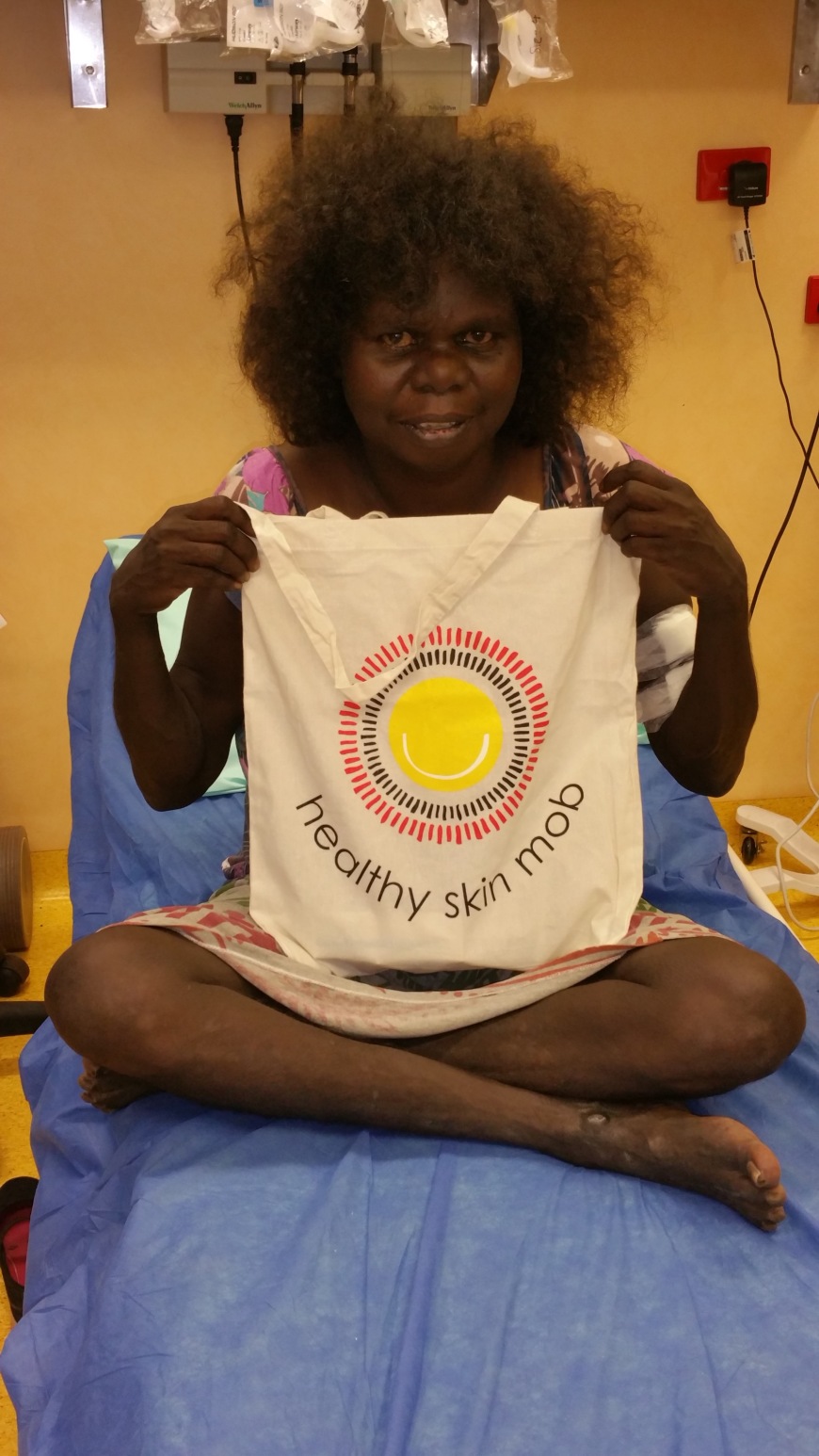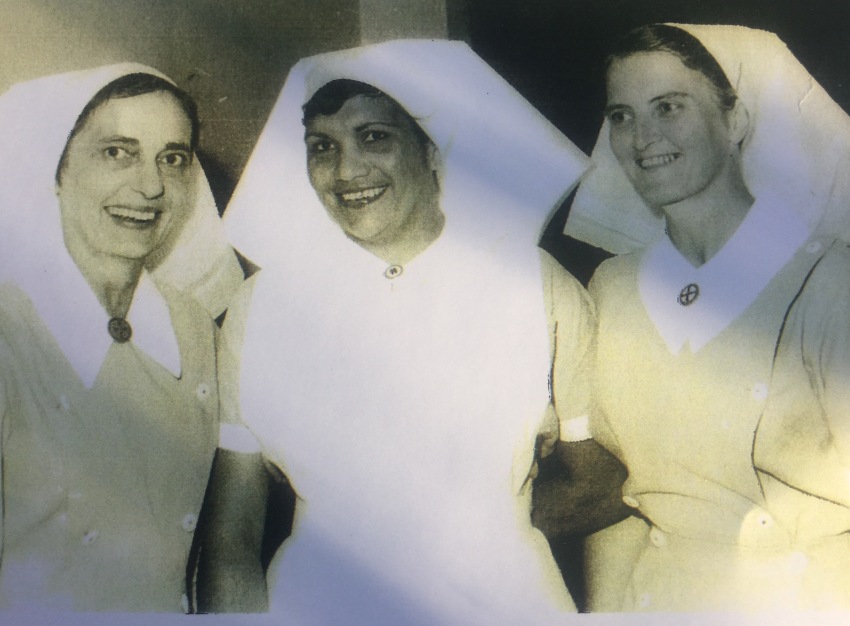Nursing wasn’t Jenny’s first choice of career. With a degree in marketing, she was as far away from healthcare as one could be. But when her second eldest daughter was diagnosed with a brain tumour, the long term health effects and struggles with the mental health system, she just couldn’t wrap her head around what was going on with her daughter. And so Jenny went back to uni in her 30’s, juggled a nursing degree with being a full time single parent and working in aged care. Not only did she successfully juggle all aspects of her life, but she managed to graduate top of her class.

A little while later, Jenny met her current partner who comes from an Indigenous background. This sparked an interest for Jenny in the cultural aspects of Indigenous health and so she completed post graduate studies in Indigenous health and wellbeing as well as further studies in Alcohol & other drugs. It was extremely relevant to the placements Jenny had up across the top end of QLD. She found herself working in an Aboriginal community in Mt Isa in a ACCHO (Aboriginal Community Controlled Health Organisation) primary health care centre and tells me how she had the opportunity to travel to some of the more remote, far to reach communities such as Doomidgee in the area. Substance abuse and petrol sniffing were rife at the time and Jenny worked closely with Mt Isa Hospital to combat the issues.
But it seemed Jenny was destined for life in the Northern Territory when NT Health asked her to come and work for them as they were opening a mandatory rehab centre in Darwin. Her role was to manage the clinical aspects of the centre. This lasted roughly 6 months before Jenny moved on, not fully happy in her role, the system or the centre itself. Having always worked in a primary healthcare role, it wasn’t an option for Jenny to move into hospital nursing, well not an option she wanted to explore anyhow. And so she worked as Drug and Alcohol nurse consultant for a while before moving into her current nursing role.

When Jenny speaks about indigenous health she oozes passion. She has a genuine care and concern for the health and wellbeing of Aboriginal people and says she is in her element working for One Disease as a healthy skin nurse. One disease is a not for profit organisation with a mission to eradicate disease from remote indigenous communities. First on their hit list is scabies, which is said to affect 7 out of 10 children before the age of one. On their webpage, One Disease describes scabies as an innocent itch but may lead to rheumatic fever, rheumatic heart disease and renal failure if left untreated. Figures suggest that the NT has the highest rates of rheumatic heart disease in the world and if scabies could be completely eradicated, so to would the high rates of rheumatic heart disease. With multiple presentations of scabies, Jenny tells me that a 4 year old Indigenous child is about to go in for major heart surgery due to developing rheumatic heart disease. Jenny reinforces the obvious, the importance that every child should be born with the same chance at good health.
Jenny describes a passionate team environment at One Disease where everybody wants to make a difference. While the majority of staff are based in Sydney, each and everyone has been out to communities, really embraced Aboriginal culture, and have been adopted by certain community families and have been given Aboriginal names. Jenny has had the opportunity to fish with local communities, eat local bush tucker such as dugong and turtle and although found cooking turtle in its shell quite sad can respect local cultural traditions. Unfortunately, Jenny’s allergic to seafood and unable to try the local seafood delicacies, but my mouth was watering just hearing about them. Jenny has also had the opportunity to take her children on trips out to communities which she tells me they love more than anything, and they are so lucky to be able to grow up with love and respect for Aboriginal Australians.
While Jenny has the opportunity to embrace Aboriginal people and culture, there is also a job to be done. Jenny describes her role as a healthy skin nurse as a consultant between the clinic and the community. A day on the job can be quite varied, however in the community a large amount of education about scabies and crusted scabies takes place. For instance, if a person is admitted to hospital with crusted scabies, Jenny will visit them during admission and provide education as well as liase with communities to arrange house fumigation, clean the house up and make sure the patient has the simple necessities at home such as clean running water and a working washing machine. When a person has crusted scabies, there is a high risk of re infection and so it is part of Jenny’s role to ensure there is a management plan added to the patients care plan at the local clinic. The plan may involve follow up treatments or skin scraping etc.
Through One Disease, Jenny’s goal in communities is to increase community understanding about scabies and crusted scabies to a level where individuals will present to clinic at the first sign of scabies rash or sores to get some cream, rather than waiting for bigger problems to develop. It’s about empowering remote Indigenous communities with the knowledge and resources to take better care of their own health. Where possible, Jenny also provides education in schools having healthy skin week and enabling young children to be empowered to look after their health from such a young age. And the great thing is, the education is working. In a recent audit Jenny has completed in one community where One disease have been working for 3 years, all 9 patients are now presenting to the clinic saying ‘I have a scabies rash or I have a sore’. According to the One disease website Gove hospital reported a 76% reduction in the number of days spent in hospital for patients with crusted scabies in 2013.
Another part of Jenny’s role is to do 0-5 year skin screenings, the idea being to gather base data and get an idea about what’s happening within communities. For transmission of scabies to occur, prolonged contact between an infected person and a non infected person needs to occur. Jenny likens the scabies mite to teenagers, stating that pretty much all they do is ‘eat, shit and make babies’ so for scabies transmission a male or female mite will only cross bodies if there is a mite of the opposite sex there. Skin screenings are not conducted in clinics, Jenny visits children in their home as well as all family members. Multiple presentations to clinic with scabies may suggest that there is a clear source of scabies in the family. Visits are causal and involve yarns with the family and stickers and tattoos for the children. They talk about clinic treatments, putting mattresses out in the sun, what can happen if scabies continues to be a problem it may cause rheumatic fever and damage their heart and kidneys in a less threatening way. Jenny says it’s common that scabies are found regularly during skin checks and it’s so important they happen because no child should be left untreated with scabies.

Some days, Jenny wonders what she is doing and if it it’s really worth it, but then realises that the work she is doing is making a difference to the health and wellbeing of remote indigenous communities. The evidence is in the improvement of results in skin screenings and the improvement in quality of lives and you can see the testimonials if you check out the One Disease website.
http://1disease.org






